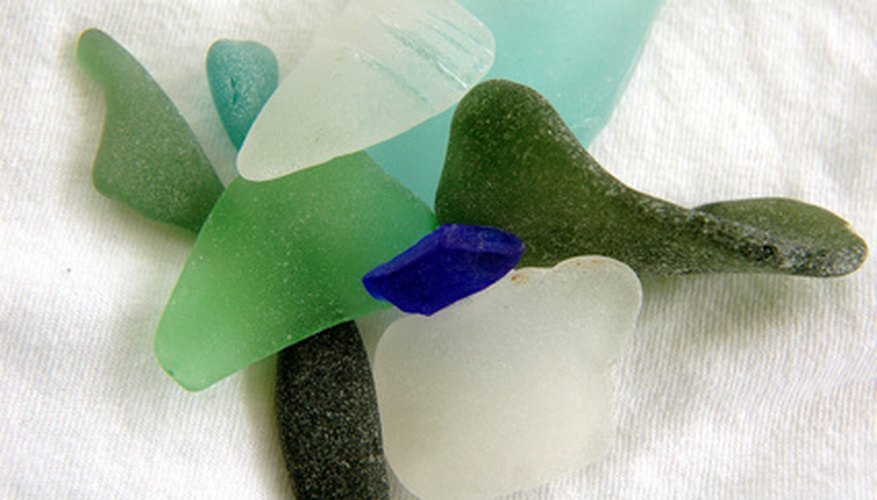Sea glass is a glasslike material that is the result of various minerals being tumbled in sandy salt water until they reach a naturally polished state. Also known as beach glass, these tiny bits of smooth glass come in a wide variety of colours, with some being more rare than others. If properly cleaned and polished, the transparent nature of the glass is enhanced, and the sea glass takes on a level of quality that allows it to be used in jewellery. Polishing sea glass is actually easy for those who take the time to learn how.
- Sea glass is a glasslike material that is the result of various minerals being tumbled in sandy salt water until they reach a naturally polished state.
- If properly cleaned and polished, the transparent nature of the glass is enhanced, and the sea glass takes on a level of quality that allows it to be used in jewellery.
Mix dish soap into a large bowl of water. Place the sea glass into the soapy water, and allow it to soak for one to two hours.
Scrub the sea glass in the soapy water using an old toothbrush. Spend extra time scrubbing inside any crevices that may be present because dirt has a tendency to build up in these areas.
Place the sea glass in a colander, and run cold water over the top of the glass. Continue rinsing until all traces of soap have been washed away. Remove the sea glass from the colander, and place the glass on a towel to dry.
Place the sea glass into a gem tumbler, and add a polishing grit to the tumbler. Add an equal portion of sugar or corn meal to serve as a cushion between the sea glass and the grit. Turn the tumbler on, and check the progress once every 12 hours until the desired polish has been achieved.
TIP
Larger pieces of polished sea glass can be used to make pendants while smaller pieces can be drilled and strung together as beads. Silicon Carbide 220 and Aluminum Oxide 600 are ideal grits for polishing sea glass.
